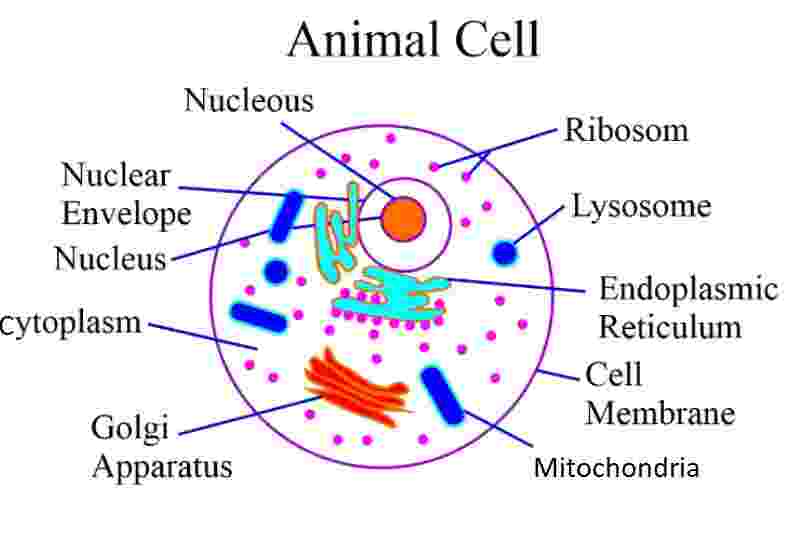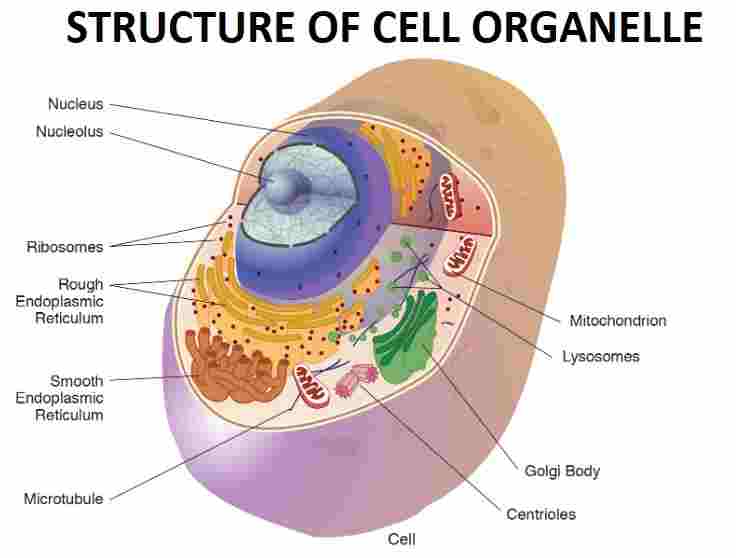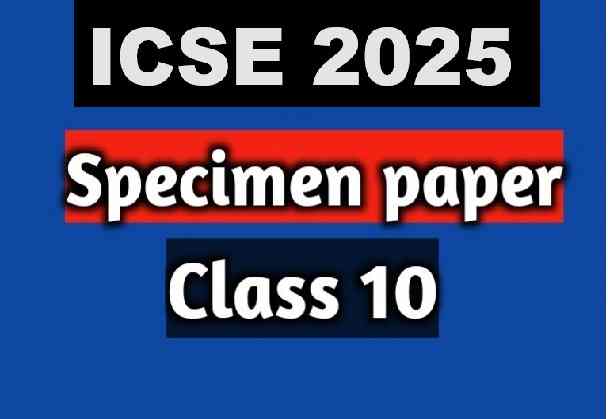The Cell Class-6th Goyal Brothers ICSE Biology Solutions Chapter-3 The Cell. We Provide Step by Step Answers of Objectives, Fill in the blanks , Definitions , Match the followings and Short/Long Question Type answers of Chapter-3 The Cell. Visit official Website CISCE for detail information about ICSE Board Class-6.
The Cell ICSE Class-6th Goyal Brothers
Biology Solutions Chapter-3
| Board | ICSE |
| Class | 6th |
| Subject | Biology |
| Book Name | Goyal Brothers |
| Chapter-3 | The Cell |
| Unit-1 | The Cell |
| Topic | Solution of exercise questions |
| Session | 2023-24 |
The Cell ICSE Class-6th Goyal Brothers
I. Multiple Choice Questions. Tick(√ ) the correct choice.
1. The cell was discovered by:
(a) Robert Brown
(b) C. Linnaeus
(c) Robert Hooke
(d) C. Darwin
Ans: (c) Robert Hooke
2. Each cell has a
(a) Nucleus
(b) Cell wall
(c) Chloroplast
(d) All the above
Ans: (a) Nucleus
3. The cell is surrounded by a membrane called
(a) Cell wall
(b) Cell membrane
(c) Cytoplasm
(d) Nuclear membrane
Ans: (b) Cell membrane
4. Organelles are present in
(a) Cytoplasm
(b) Vacuoles
(c) Nucleus
(d) All the above
Ans: (a) Cytoplasm
5. A cell organelle commonly called ‘suicide bag’ is
(a) Nucleus
(b) Lysosome
(c) Chloroplast
(d) Ribosome
Ans: (b) Lysosome
II. Fill In The Blanks:
- The _Nucleus_ is the control centre of the cell.
- The instrument used to see tiny objects is called a _Microscope_.
- _Chloroplast_ is called the kitchen of the cell.
- The _Cell membrane_, _Cytoplasm_ and _Nucleus_ are parts of a cell.
- Energy is produced in _Mitochondria_.
- The term cell was given by _Robert Hooke_.
- Cell wall is present in _plant_ cells.
III. Which of the following statements are true(T) and which ones are false(F)? Mark T or F :
- Most cells have only one nucleus. [T]
- Only the nucleus of a cell represents the protoplasm. [F]
- Most cells are microscopic. [T]
- All living organisms are made of cells. [T]
- Cells must have a nucleus to live. [T]
- Every cell has cytoplasm. [T]
- All cell in a multicellular organism can live independently. [F]
- The outermost covering in an animal cell is called cell wall. [F]
IV. Match the statement in Column A with those in Column B
Column A |
Column B |
1. Cell |
1. Plants |
2. Nucleus |
2. Tiny structures inside the cells |
3. Cell wall |
3. Unit of living body |
4. Chloroplast |
4. Boss of the cell |
5. Cytoplasm |
5. Contains green pigment |
6. Organelles |
6. Jelly-like substance between cell membrane and nucleus. |
Answers:
Column A |
Column B |
| 1. Cell→ | 3. Unit of living body |
| 2. Nucleus→ | 4. Boss of the cell |
| 3. Cell wall→ | 1. Plants |
| 4. Chloroplast→ | 5. Contains green pigment |
| 5. Cytoplasm→ | 6. Jelly-like substance between cell membrane and nucleus. |
| 6. Organelles→ | 2. Tiny structures inside the cells |
V. Answer the following questions :
Question 1 :- Define the following:
-
Cell
-
Nucleus
-
Cytoplasm
-
Protoplasm
-
Cell membrane
-
Microscopic organisms.
Answer:
- Cell: A cell is defined as the basic smallest structural and functional unit of an organism.
- Nucleus: The nucleus is a double-membraned organelle that contains the genetic material and other instructions required for cellular processes.
- Cytoplasm: It is a gel like substance that fills the cell and occurs between the plasma membrane and the nucleus.
- Protoplasm: Protoplasm is the colourless liquid within a cell that comprises the cytoplasm, nucleus and organelles.
- Cell membrane: he cell membrane, also called the plasma membrane, is found in all cells and separates the interior of the cell from the outside environment.
- Microscopic organisms: Microscopic organisms are an organism that can be seen only through a microscope.
Question 2 :- Give three examples of unicellular organisms.
Answer: Amoeba, Bacteria and yeast are the type of three unicellular organisms which are made up of only one cell.
Question 3 :- Mention the functions of the following:
-
Cell membrane
-
Chromosomes
-
Vacuoles
-
Cytoplasm
Answer:
- Cell membrane: The plasma membrane, or the cell membrane, provides protection for a cell. It also provides a fixed environment inside the cell, and that membrane has several different functions. One is to transport nutrients into the cell and also to transport toxic substances out of the cell.
- Chromosomes: Chromosome is a structure found inside the nucleus of a cell. It is made up of proteins and DNA organized into genes. Each cell normally contains 23 pairs of chromosomes.
- Vacuoles: Vacuoles store nutrients and water on which a cell can rely for its survival. They also store the waste from the cell and prevents the cell from contamination. Hence, it is an important organelle
- Cytoplasm: The cytoplasm is responsible for holding the components of the cell and protects them from damage. It stores the molecules required for cellular processes and is also responsible for giving the cell its shape
Question 4 :- Why are the following important to a plant cell:
-
Cell wall
-
Chloroplast
-
Mitochondria
-
Nucleus
Answer:
- Cell wall: Plant cells require cell wall for protection against variations in temperature, high wind speed, atmospheric moisture, etc.
- Chloroplast: Chloroplasts contain green pigment called chlorophyll which helps in manufacture of food through the process of photosynthesis in plants.
- Mitochondria: Mitochondria is an important cell organelle because it performs cellular respiration and releases energy in the form of ATP in plant cell.
- Nucleus: It contains chromosomes which have genes that contain the hereditary characteristics to be transferred from parent to offspring.
Question 5 :- Which cell organelle is found only in animal cells?
Answer: Centrioles are found only in animal cell.
Question 6 :- Draw an outline diagram of an animal cell. Label its different parts.
Answer: Labelled diagram of an animal cell.

Question 7 :- Mention at least four differences between plant cells and animal cells.
Answer:
Plant cells |
Animal cells |
| 1. It consists of a cellulose and cell wall outside
the cell membrane. |
1. It does not have a cell wall |
| 2. Centrosomes and centrioles are absent | 2. Centrosomes and centrioles are present |
| 3. Plastids are present | 3. Plastids are absent. |
| 4. Cilia is absent | 3. Cilia is present in most animal cells |
Question 8 :- What features are possessed by both plant and animal cells.
Answer: Both have plasma membrane. Both have nucleus. , endoplasmic reticulum, golgi apparatus, lysosomes. They both possess cell organelle, mitochondria which is the source of aerobic respiration where ATP is produced
Question 9 :- Name the cell organelle which are found only in the plant cells?
Answer: Chloroplasts are double-membraned organelles present only in plant cells.
Question 10 :- Name the different cell organelles and the functions these organelles perform in the cell.
Answer: The different cell organelles and the functions these organelles perform in the cell are –
- Endoplasmic Reticulum → It is responsible for the production and secretion of steroid hormones.
- Ribosomes→ The function of Ribosome is, it reads RNA and synthesis protein.
- Golgi apparatus→ The Golgi apparatus is responsible for transporting, modifying, and packaging proteins and lipids into vesicles for delivery to targeted destinations
- Lysosomes→ The key function of lysosomes is digestion and removal of waste.
- Mitochondria→ It produces energy through the process of oxidative phosphorylation. Besides this, it is responsible for regulating the metabolic activity of the cell.
- Plastids→ Plastids are responsible for manufacturing and storing of food.
- Vacuoles→ Vacuoles store nutrients and water on which a cell can rely for its survival.
- Centrosome→ The centrosomes help in cell division.
Question 11 :- Give the structure of different cell organelles found in cell along with proper diagrams.
Answer: The structure of different cell organelles found in cell.

VI. Unscramble the following words
- SUNECUL= NUCLEUS
- RAMBENME= MEMBRANE
- PALCOTMYS= CYTOPLASM
- SAMPLOTROP= PROTOPLASM
— : end of The Cell Class-6th Goyal Brothers Prakahan:–
Return to- ICSE Class -6 Goyal Brothers Biology Solutions
Thanks.
Please share with your friends if you find it useful.


